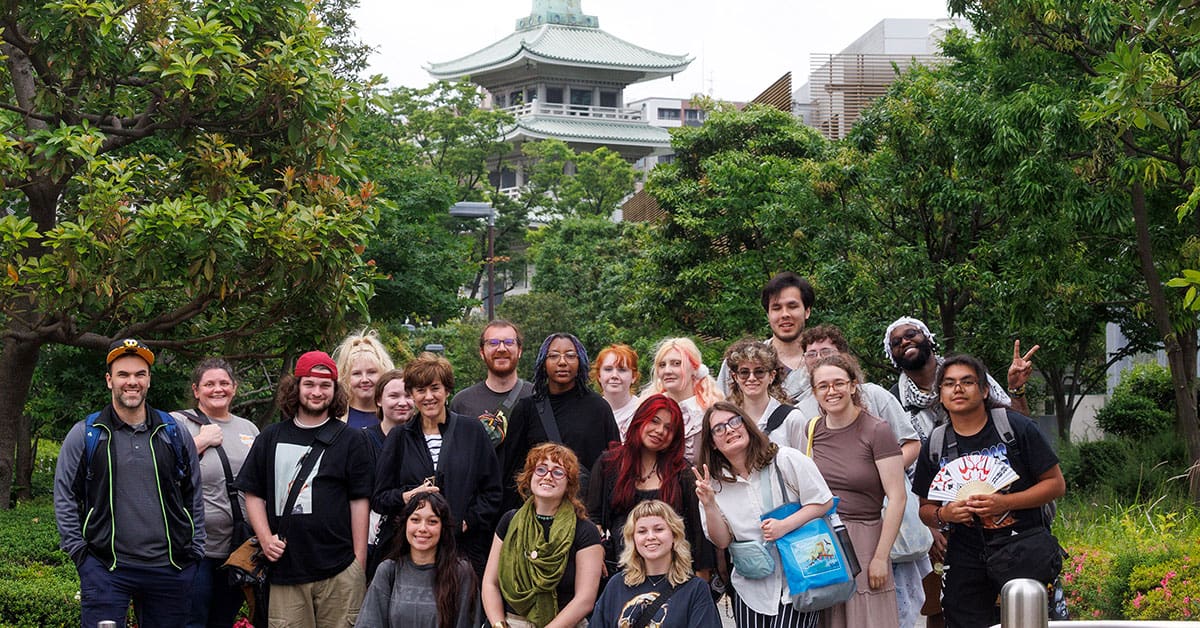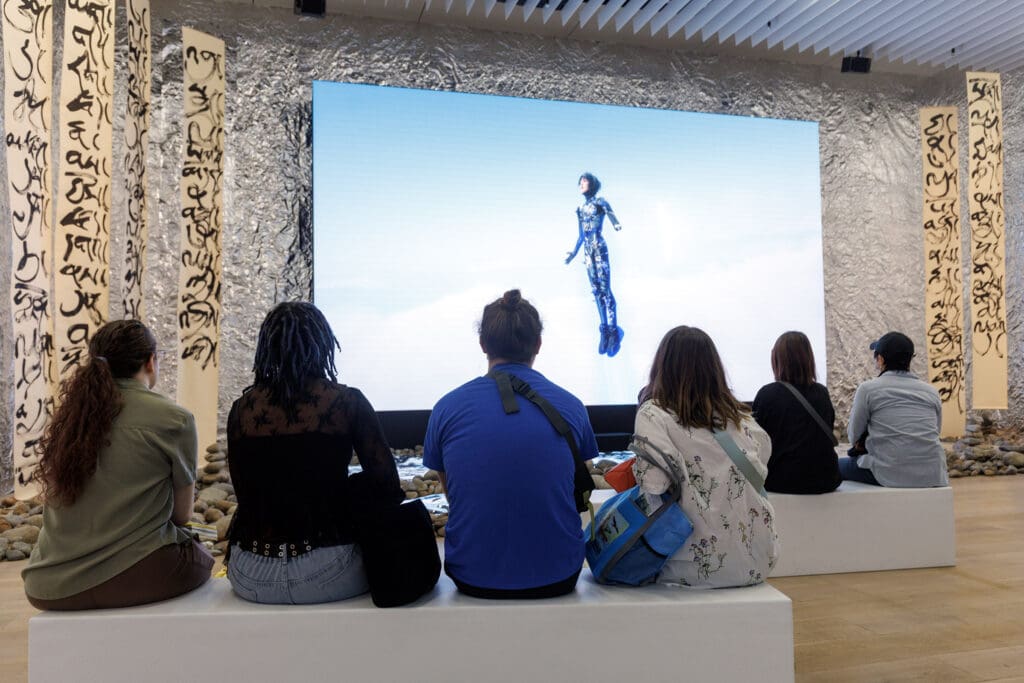UA Little Rock Art Students Explore Culture and Creativity in Japan

Nineteen students from UA Little Rock’s School of Art and Design spent two immersive weeks this summer studying contemporary Japanese art and culture in Tokyo and Kyoto.
Led by Professors Michele Noiset and Clark Valentine, the May 19-30 study abroad trip offered hands-on experiences with calligraphy, tea ceremonies, temple architecture, and modern art museums. The trip encouraged students to reflect on the intersections of tradition, technology, and visual storytelling.
“For me, the highlight was the cultural experiences,” said Clark Valentine, assistant professor of drawing. “Together, we visited numerous temples and shrines, each giving us valuable insights into Japanese history. These experiences helped us build a narrative of historical Japan while also seeing how our contemporaries are engaging with that history today. We had 19 students from our program participate, which made it even more meaningful.”
Funded in part by the Ann Maners and Alex Pappas Study Abroad Fund, the program emphasized sketching, journaling, and cultural observation. Students were asked to identify a single aspect of Japanese culture that stood out to them, which they will translate into illustrated journals and podcasts in their upcoming coursework. Some of their work is on display on the third floor of the Windgate Center of Art and Design.
“The opportunity to travel to Japan was an incredible adventure,” said Noiset, assistant professor of illustration. “Our students were inspired not just by the art and architecture, but by how respectful and clean the cities were. It was an unforgettable experience for all of us.”
The UA Little Rock students who went on the trip include Jerry Anderson, Jason Bongfeldt, Savannah Brinkley, Scarlett Clements, Jacia Gilbert, Madelyn Hall, Emma Huey, Courtlyn Jenkins, Leianna King, Ariana Langley, Macey McLaughlin, Rocio Pantoja, Harlowe Phillips, Megan Rouse, Virginia Singleton, Jessie Steppe, Landon Tabor, Stormie Thirion, and Alexandro Vazquez.
The group’s busy itinerary included visits to the Tokyo National Museum, Mori Art Museum, and the Kyoto International Manga Museum, as well as historic sites like the Meiji Shrine and Kiyomizu-dera Temple. Students participated in a calligraphy workshop, practiced the traditional tea ceremony, and even attended a Maiko performance in the Gion district.

“One activity that really stood out for me was the International Manga Museum we went to in Kyoto,” said Leianna King, a senior illustration major from North Little Rock. “To me, it was just so nice to see how something like manga—often considered a ‘lower art form’ in the U.S.—was respected enough to be housed in a museum.
King, who hopes to become a children’s book and graphic novel illustrator, was struck by the blending of nature with urban spaces in Tokyo.
“The most memorable parts of this trip for me were just the scenery of Tokyo itself,” King said. “I loved how flora interacts with the city. Despite being in a major metropolitan area, plants were everywhere: growing on the walls of buildings and covering fences. I was just memorized by simply looking out of the train windows, seeing everything from the cityscape to the mountains and rice fields.”
For graphic design student Virginia Singleton, the trip served as both a creative recharge and a deep lesson in cultural nuance.
“Navigating Tokyo’s rail system sharpened my instincts for intuitive design,” said Singleton, who plans to launch a freelance branding studio after graduation. “And things like the tea ceremony reinforced the importance of pacing and ritual. My future brand work can borrow that same mindful choreography to create memorable user experiences.”
Singleton also found value in the small moments, like getting ramen with classmates late at night or seeing Hokusai’s “The Great Wave off Kanagawa” in person.
“It’s those sensory details—the smell of temple incense, the grain of handmade paper—that stick with me,” Singleton said. “They’re going to shape how I design moving forward.”
Despite their varied artistic interests spanning illustration, design, photography, and storytelling, each student came away with a deeper understanding of Japan’s balance of high-tech innovation and centuries-old traditions.
“Every activity taught us something about intention and respect,” Noiset said. “Whether it was mark-making in calligraphy or bowing at shrines, the experiences gave students a new lens for their creative work.”
